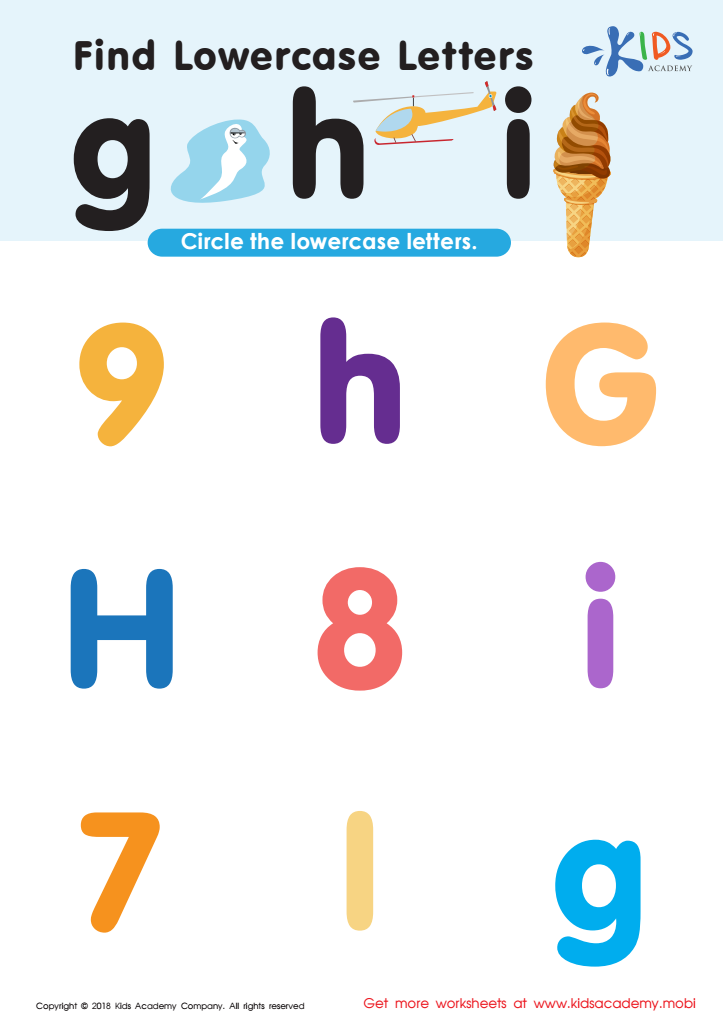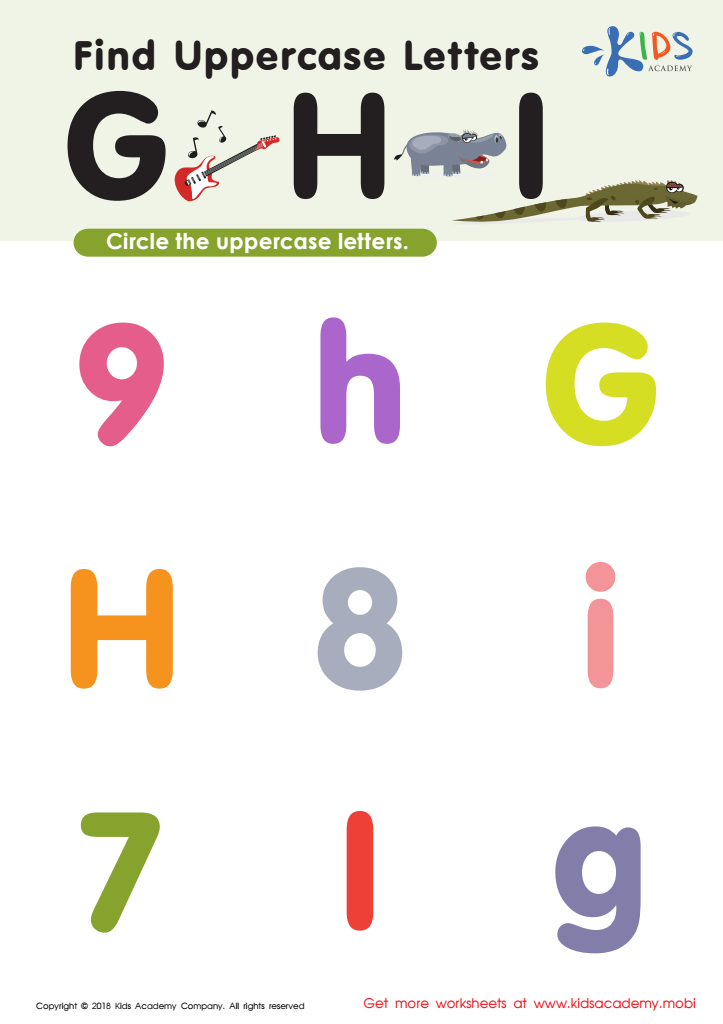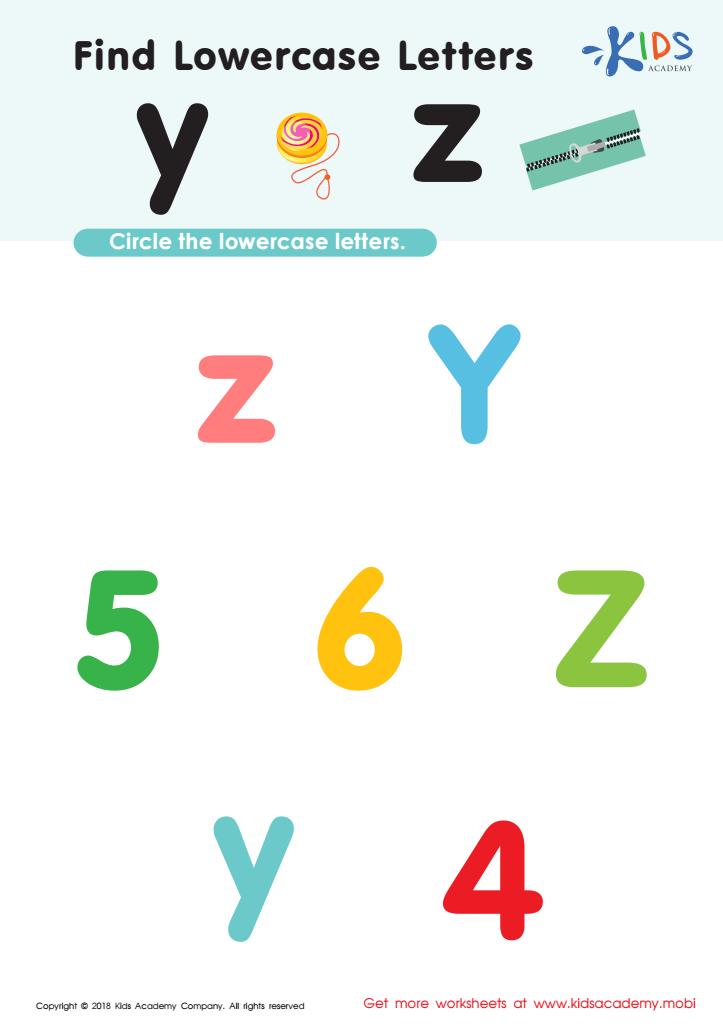Visual discrimination Normal Upper & Lowercase Letters Worksheets for Ages 5-7
4 filtered results
-
From - To
Enhance your child's letter recognition skills with our "Visual Discrimination Normal Upper & Lowercase Letters Worksheets" designed for ages 5-7. These engaging worksheets focus on developing the essential ability to distinguish between upper and lowercase letters, critical for early literacy. Perfect for young learners, the exercises are crafted to improve visual discrimination, enhance reading readiness, and support cognitive development. Through fun and interactive activities, children will gain confidence identifying and matching letters. Ideal for classroom use or at-home practice, provide your child with the tools they need to master the alphabet. Download now and watch their skills soar!


Find Lowercase Letters g h i Worksheet


Find Uppercase Letters G, H, and I Worksheet


Find Lowercase Letters y z Worksheet


Find Uppercase Letters V, W, X Worksheet
Visual discrimination is the ability to perceive and differentiate between various visual stimuli, which is crucial for young learners aged 5-7 who's at a stage of developing foundational reading and writing skills. Understanding and distinguishing uppercase and lowercase letters is an important aspect of this visual discrimination.
Teachers and parents should care significantly about this aspect for several reasons. First, there are considerable differences in shape and form between uppercase and lowercase letters (e.g., B and b, D and d), and mistaking one for the other can lead to confusion in both reading and writing. This differentiation aids in recognizing letter symbols quickly and accurately, which is the cornerstone of reading at this age.
Moreover, accurate visual discrimination supports better word recognition. For instance, reading a word correctly involves not just recognizing individual letters but understanding them in their correct forms as part of the word structure. Clear visual discrimination abilities improve a student's ability to follow written instructions and comprehend text, thereby enhancing both academic performance and confidence.
Finally, visual discrimination skill development is linked to improved spelling which is pivotal for writing proficiency. Without a firm grasp of upper and lowercase letters, children might produce inconsistencies in their writing, leading to misunderstandings or mistakes.
Emphasizing this skill helps in cultivating keen observation and attention to detail, essential life skills beyond just academics.
 Assign to My Students
Assign to My Students












